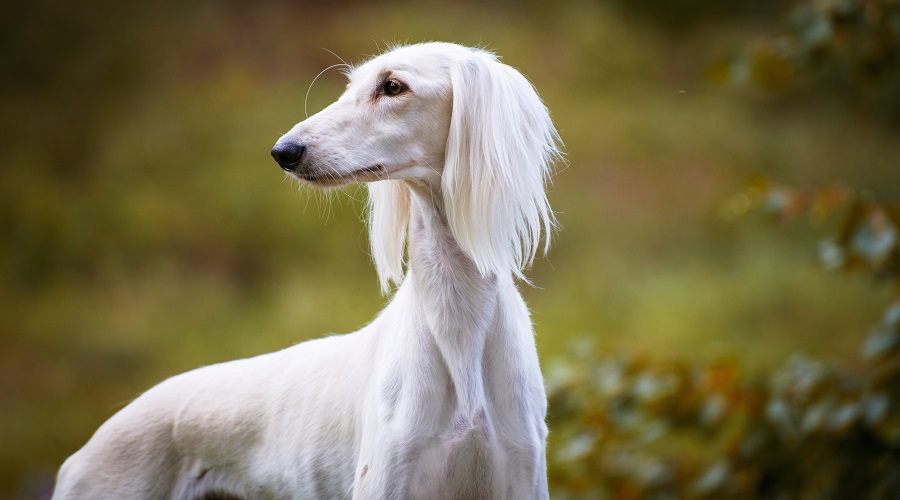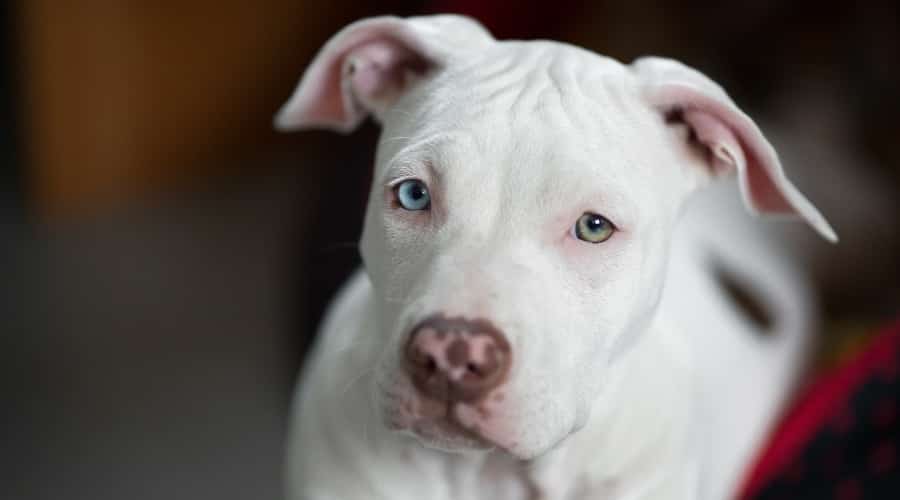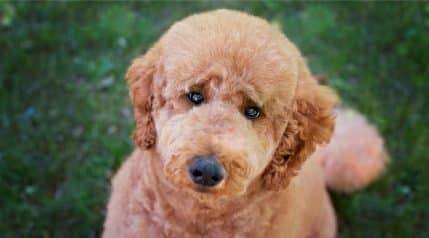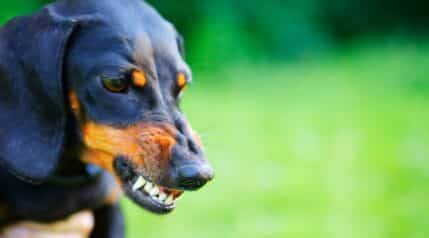The Greyhound is one of the most unique dogs on the planet, with a striking silhouette that is instantly recognizable. Their appearance differs greatly from that of most popular dogs. Greyhounds are almost always lithe, slender, and elegant creatures, with a figure that suggests they are excellent runners. You’d be correct in that assumption – these dogs love to run.
They were bred for the hunt and are among the fastest dog breeds in the world. However, you may also be surprised to know that most Greyhounds are just as content to lounge around versus sprint in the park. This sighthound makes a wonderful family companion, as they are even-tempered, sweet dogs. They have very calm personalities and are happy to spend all day relaxing with their loved ones.
Many prospective owners are looking to have a laid-back and gentle dog. While the Greyhound is a wonderful pup, it’s not unusual for people to mix this breed with others in search of an even more unique dog. This often creates some very beautiful and interesting hybrids. We love the experience of raising one-of-a-kind dogs, so we have listed 20 of the most notable Greyhound mixes for your consideration and reading pleasure.
Note: All photos are of the breed mixed with the Greyhound – not of the actual hybrid dog. They are so unique, that we had a hard time finding good photos to share!
Greyhound Shepherd

Breeds: German Shepherd and Greyhound
If you are looking for a reliable new friend for your family, you should look into the Greyhound Shepherd. German Shepherds are known for being very loyal and somewhat serious. This melds well with the Greyhound’s gentle personality. What you get is a mix that is regal, relaxed, and patient with every member of the family. They are also very intelligent, making it easy to train and socialize them. You should focus on their training early on in life to promote good behavior. This can help prepare them for a life lived with children and other pets who share the home.
Your Greyhound Shepherd has higher energy needs than a regular Greyhound would. However, they do not require much intense exercise. They prefer to have shorter sessions of activity each day instead of a tiresome single session. For this reason, it’s a good idea to put the members of your household on a rotating schedule for taking care of your Greyhound Shepherd’s energy needs. Thankfully, it doesn’t take too much effort to tire them out. These dogs are very much happy to nap in the sun versus doing anything strenuous.
Greyador

Breeds: Labrador Retriever and Greyhound
You get a really charming dog out of the Greyador, as they come from famously friendly parents, the Greyhound and Labrador Retriever. Both dogs are popular for their kind hearts, sharp minds, and great attunement to their humans’ emotions. This makes the Greyador a great choice for a family looking for a bright and sensitive companion. They are great family pets, as they have long patience for small children who may be rowdy. Greyadors know when to walk away when the situation becomes unpleasant, so you don’t need to worry about unexpected aggression. Still, their loving nature dictates that they must be near their humans at all times. Too much time alone can lead to bad bouts of separation anxiety.
Greyadors are more active than regular Greyhounds, needing roughly 60 minutes of activity every day. These are smart dogs who like variety, so you need to think of good activities to do together beyond their required daily walks. The Greyhound in your Greyador was bred for hunting, so your mix may have a prey drive, making walks difficult if they see a small, chasable animal. Training them early in their lives can make all the difference in behavior, so take advantage of this mix’s high intelligence as soon as possible.
Greybull

Breeds: American Bulldog and Greyhound
If you are looking for a Greyhound mix who is a bit more bold and outgoing, with all the gentleness you normally get from Greyhounds, then the Greybull (mixed with American Bulldog) would be a great fit. Expect your Greybull to be more alert than your Greyhound. While they aren’t exactly suited to be guard dogs, they are still good at letting you know when something is amiss. Their sharp senses might make it difficult to train them since they tend to get distracted. The Greyhound’s prey drive can exacerbate this. To make the most out of their learning, they need you to be a firm leader when teaching them obedience and commands. Try not to get frustrated by this, as your Greybull is a wonderful house pet with an abundance of affection to give every member of their family.
Try to give your Greybull moderate amounts of exercise each day. A 45-minute walk coupled with playtime is a good way to keep their bodies and minds healthy. It’s important that you give this mix enough mental stimulation, as they can become destructive when they get too bored. Greybulls have an undeniable love for life, so be sure to keep them happy by attending to their needs as best as you can.
Greyhuahua

Breeds: Chihuahua and Greyhound
This funny little furry friend may have come from a lax Greyhound parent, but you can expect them to be bright balls of energy. This mix is much smaller than the Greyhound, given their Chihuahua parentage, but their personalities are larger-than-life. They have a strong protective instinct, making them a good choice for a watchdog. However, you should take special care to train them to act appropriately, as they can display a lot of impatience for mischief. This makes them better suited to smaller families without young children. Still, they are happy to be around other dogs, which is good news if you have other canine companions in your household.
The Greyhuahua is one of the more active dogs on this list, so you need to give them appropriate amounts of exercise. They have relatively high energy needs and require at least two walks of 30 minutes each per day. It’s best to split up their exercise into short bursts instead of long sessions, as this small dog may have trouble keeping up with larger human strides. Since this mix is sociable, they enjoy playtime at the dog park and getting to know new friends. Try to indulge them in this pleasure whenever possible.
Doberhound

Breeds: Doberman Pinscher and Greyhound
The Doberhound is a big dog with a penchant for being intimidating. You can expect that they make good guard dogs– it’s just in their Doberman Pinscher genes. They work best when they are properly trained, though, because they often default to being friendly around people and other animals. The sweetness of their Greyhound parentage shines through beautifully in the Doberhound. Socialize them early, and they will fit perfectly into most families. They are obedient dogs with a good amount of intelligence, making them a breeze to train.
Doberhounds can be a bit less active than the regular Doberman, but you should still take care of their energy needs each day. They require daily walks of around 1 hour, plus extra playtime in the form of more strenuous activities. They especially like playing fetch and going for sprints in this dog park. Since they are larger dogs, you need to provide them with a fenced-in yard where they can expend pent-up energy when they feel the need.
Greygle

Breeds: Beagle and Greyhound
Both the Greyhound and Beagles were bred for the hunt, giving them a natural edge for chasing down small creatures. While this may be great if you are a hunter, it might not be so good in households that have small pets. Luckily, training your Greygle to behave is fairly easy, given their high intelligence. You have to start them young to make the most of their training. When they’ve sufficiently calmed down, you might find that this dog is one of the sweetest ones you will ever meet. In their downtime, Greygles love nothing more than hanging out with their pet parents and displaying their complete adoration of them. Be sure to give them a lot of attention, because they want to give you just the same.
The Greygle doesn’t particularly enjoy strenuous exercise, though they need a secure yard where they can run around when the urge strikes. Take them out on walks of around 30 minutes a day. This is enough to get them tired out and ready for relaxation. Just be sure not to take them off their leashes because this dog has an incredible sense of smell and wants to chase every interesting scent they find.
Greygi

Breeds: Corgi and Greyhound
One of the more interesting mixes on this list comes from Greyhound and Corgi parents. While the Greyhound is tall, limber, and sleek, Corgis are short, chubby, and fluffy. You’ll never know what your Greygi look like until they’re in front of you. However, since both dogs are very good-natured, you can rest assured that your Greygi is similar, with a gentle disposition and deep loyalty toward their family. Given the Corgi’s insatiable need for playtime, this mix will be a lot more exuberant than an ordinary Greyhound. They adapt well to many different styles of living. If you’re looking for a dog to share your apartment, this may be the one for you.
Still, the Greygi requires a good bit of exercise every day. They desire adventure, so while they might be fine in an urban setting, you should still take them out as often as you can. Regular walks of around 45 minutes a day should be enough to satisfy them. However, as we’ve mentioned, these dogs love to play. Always set aside time for games and activities together, whether at home or at the park. Giving your Greygi toys is also a great way to make them happy.
Grusky

Breeds: Husky and Greyhound
The Grusky often makes for a pet with balanced energy needs, given that Siberian Huskies are highly energetic, whereas Greyhounds are more inclined to relax. However, their personalities mesh very well. Gruskies are intelligent, friendly, and gentle dogs who are lovely companions for many families. They can be quite playful, and with proper socialization early in life, are ideal playmates for children. You need to train the prey drive out of them if you have smaller pets in the home. Luckily, it’s not too difficult to train a Grusky. Their quick thinking and eagerness to please make them very teachable.
Since the Grusky is a highly adaptable dog, they can live happily in many different locations, including apartments. However, these dogs love the great outdoors, so you should see to it that you take them out as often as you can. They have a high wanderlust potential, so be sure that they spend time in a secure yard when they aren’t inside your home. Supplement hour-long daily walks with a lot of different activities to keep your dog’s need for exercise in check, as well as to stave off boredom.
Greyluki

Breeds: Saluki and Greyhound
The Greyluki is a dog with an amazing capability for running. Both their parents, the Saluki and the Greyhound, were bred to be hunting dogs that needed to be fast in order to catch their prey. If you enjoy hunting as a hobby, the Greyluki may be the perfect companion for your journeys into the wild. Since the Saluki is smaller than the Greyhound, the Greyluki is more of a compact dog. They do not require much space and can be very happy in smaller homes. They are very bright and obedient dogs, making them very easy to train. Their quick thinking and agility make them suitable for work outdoors. This is something they enjoy, so try to give them tasks every day.
Your Greyluki is more active than the average Greyhound. They need roughly 60 minutes of exercise daily. You can intersperse more intense activities with your daily walks. Try hiking, playing fetch, or simply letting them showcase their natural talents by running free at the park. Given their high intelligence, you need to provide them with something to do as often as possible. If left to their own devices, they may grow bored and restless and take out their frustration on your belongings. A tired dog is a happy dog, so be sure to tire your Greyluki out every day.
Grug

Breeds: Pug and Greyhound
While this mix between the Greyhound and Pug might be strange in appearance, given how different their parents look from each other, the Grug is an awesome dog who has plenty of love to give. Greyhounds are very laid-back creatures who love relaxing with their loved ones. Pugs are the same, except they have a propensity for being absolutely hilarious. You’ll find that your Grug is as goofy as their name. They almost certainly love all your friends and crave being the center of attention at all times. It’s still a good idea to train and socialize them when they are still puppies, though. The Greyhound’s tendency to chase its prey can transfer to your Grug. This can wreak havoc in homes that have smaller pets. As long as you show them firm leadership, your Grug might be inclined to listen to your training.
If you live a more carefree lifestyle, then the Grug is a perfect companion. Both the Grug’s parents don’t particularly have a need for vigorous exercise. Taking them out on walks of around 30 minutes per day should be enough to quench their need for activity. Still, be sure to monitor your dog to see when they want to play. Try to indulge that desire as often as possible. That keeps them well-behaved and happy.
Greyoodle

Breeds: Poodle and Greyhound
The Poodle’s curly fur mixed with the Greyhound’s sleek coat makes an interesting combination in the Greyoodle. The result is a fluffy dog with a wiry hair texture, with the bright eyes of the Poodle and the lanky frame of the Greyhound. Be warned that this dog has no shortage of smarts. Their confidence in their intelligence can give them a stubborn streak. Training them firmly from an early age can greatly reduce any difficult behavior they may be prone to display. They don’t have a lot of patience, so they are better off in households consisting of adults. They also make a good companion for elderly people. Socialization in puppyhood is important if you plan to keep them in a house with young children or other pets. Despite this, they have a very loving personality and are always happy to relax with their owners. They thrive on affection and desire it from you every waking moment of the day.
Poodles usually are big bundles of energy, while Greyhounds are very chilled-out dogs. Your Greyoodle is probably more active than the average Greyhound but less than a Poodle would be. Make it a point to bring them out for activity every day. Walks of around 40-60 minutes are good and made even better if you can include games and other activities in the mix. Do your best to keep your Greyoodle occupied. This helps curb boredom and frustration– something these super-smart dogs are prone to developing.
Mastiff Greyhound

Breeds: Mastiff and Greyhound
A Mastiff Greyhound is almost always a big dog, as both their parents are pretty large. These dogs tend to be muscular and powerful, with all the agility you’d expect from a regular Greyhound. While they can look quite intimidating, they’re actually very devoted and gentle pets who are perfect for families who have the space for them. They like to forget their size and may plop all their weight onto your lap in an attempt to cuddle. These dogs stay calm even when faced with annoyance, as they are very patient. It won’t be difficult to introduce them to small children or other pets in your family, especially if you socialize them early.
These gentle giants are very energetic dogs when they know it’s time to play. Always take the time to attend to their need for exercise. They need one hour of brisk walking each day, with a lot of playtime in between. As they are so large, you need to provide them with a spacious, fenced-in yard where they can stretch their legs when they feel the need. Be sure your space can accommodate their size, as they really don’t fare well in smaller houses.
Border Greyollie

Breeds: Border Collie and Greyhound
The Border Greyollie is one of the most intelligent dogs on this list. It’s simply expected for them to be smart, as their Greyhound parent is wonderfully clever. Add the famously brilliant Border Collie into the mix, and you’ll have something of a genius on your hands. They also are clamoring for playtime throughout most of the day. Their large personalities can make them an intimidating choice for most first-time dog owners, but the effort put into their care is very well worth it. This mix always wants to keep up with you in everything that you do, as they are absolutely loyal companions. They make great companions for households with kids, as they delight in being able to play with family members who can match their energy.
Border Greyollies sadly are not content living in an apartment. Their Border Collie parentage dictates that they have wide, open spaces in which to roam around and work. If you live in a rural area with a large, fenced-in yard, you could make this mix very happy. Since their energy needs are high, take them out for brisk walks of no less than 60 minutes per day. Always give them time and space to play, and be sure to join in on the fun whenever possible.
Greybox

Breeds: Boxer and Greyhound
The Greybox takes the Greyhound’s passive personality and amps it up with energy and bravery from the Boxer. You might find that this dog is more confident than regular Greyhounds while still retaining the bright and friendly personality that makes Greyhounds so lovable in the first place. The Boxer’s genetics make the Greybox more territorial, so they can be intimidating watchdogs when trained correctly. However, try not to get scared of their large frames and serious faces. The Greybox is an absolute sweetheart who is always eager to express their love. Socialize them from early on, and you’ll find they get along famously even with small children, cats, and other pets who share the home.
The Greybox has high energy needs, though not as high as the typical Boxer’s. They like variety in their exercise, so intersperse daily walks with more strenuous activities like hikes, sprints in the park, as well as games of fetch. These dogs know when it’s appropriate to be playful, so they actually fare well even in smaller living spaces. Just be sure to bring them out regularly to stretch their legs, and your Greybox will be happy.
Greymatian

Breeds: Dalmatian and Greyhound
Both Dalmatians and Greyhounds have graceful bodies that make them adept at feats of athleticism. When combining the two together, you get a very elegant dog with a streamlined form that is a bit more muscular compared to the Greyhound’s. There’s also a good chance they end up with spotted fur, which is adorable. This mix is a wonderful companion that does best in households where they can be given lots of attention. If you socialize them well, they can get along nicely with small children. However, you should still monitor all the interactions your kids have with your Greymatian, as you would with any other dog.
Greymatians are pretty energetic and always ready to play. Attend to their needs for fun by giving them a lot of things to do. Toys, games, and tasks are all good strategies to keep them occupied and away from any potential destructive behaviors. Supplement this with walks of around 50 minutes per day at a brisk pace. Greymatians are not comfortable in small homes, so they should have a big, safe space to run around freely.
Grey Retriever

Breeds: Golden Retriever and Greyhound
Bring some Gold into your Grey with this lovely mix that is beautiful, charming, and loyal. Golden Retrievers and Greyhounds have similar personalities in that they are both smart and gentle dogs who love doting on their family members. However, you may find that the Grey Retriever is much more playful than a regular Greyhound. This makes them an ideal family companion for those who are capable of matching their warm, sunshiney energy. The Grey Retriever is easily attached to kids and pets who share their homes. You’ll find that they are a breeze to train and socialize with, given their eager-to-please nature and intelligence.
Be sure to allow plenty of time for your Grey Retriever to exercise and play. They are an active mix who is always looking forward to the next adventure. Walk them daily for around 60 minutes, with additional time spent on more strenuous exercise. This mix loves playing games in the dog park with their other canine friends– and they have many, given how charming they are. However, they are also content to run around the yard, provided that it’s one that’s fenced-in for the best safety.
Irish Wolf Greyhound

Breeds: Irish Wolfhound and Greyhound
The Irish Wolf Greyhound comes from parents who are both fairly similar in personality, with the same talent in athleticism. The result is a mix with a stable personality– all the gentleness you’ve come to expect from the Greyhound, but with some added playfulness for extra fun. As both parents are hounds who were bred for the hunt, it’s likely that your IWG is going to inherit a high prey drive. If you don’t train them to behave differently from early on, this could pose a danger to small animals in and around your home, including pets. Thankfully, the IWG’s intelligence makes it easy to teach them what they should and shouldn’t do.
Your Irish Wolf Greyhound is going to be more energetic than a regular Greyhound, so you should be prepared to meet their energy needs. You’ll need to help them stretch those long limbs via a daily walk. Upwards of an hour is recommended for this mix. If you socialize them well enough from an early age, you and your IWG can have a lot of fun mingling with other dogs at the park. Be sure to indulge their need for playtime with others to keep them content and mentally stimulated.
Greybull Pit

Breeds: Pitbull and Greyhound
We love our Pitbull mixes, and the Greybull Pit is absolutely no exception. This isn’t even hard to do, as they’re very receptive to learning new things with their quick thinking and obedient personality. This mix was made for both agility and power, though if you’d ask them, they’re much happier to snuggle with you than do too much laborious exercise. They are very loving and protective of their family, making them a good choice for a watchdog.
These dogs do not require a lot of exercise, though they should still get enough activity daily to keep their minds and bodies in shape. You can do around 45 minutes of activity each day, split up between playtime and a brisk walk. These dogs can get ahead of themselves and be over-eager to play. When not given what they want, they may be prone to destructive behaviors, as any smart dog would be when faced with boredom. Luckily, it doesn’t take too much to keep them engaged. Toys, games, and tasks are all good ways to give your Greybull Pit exercise while keeping their brains busy.
Grippet

Breeds: Whippet and Greyhound
Both the Whippet and Greyhound have familiar S-shaped bodies, with long limbs and narrow faces. They’re graceful dogs who were designed for running at top speeds. However, the Whippet is a medium-sized dog, making them a good bit smaller than the Greyhound. You can thus expect your Grippet to be smaller in size as well. Personality-wise, the Grippet has great potential to be the perfect family pet. They are cheerful, bright, and very loving. However, you need to take care that they quell their prey drive as much as possible to make other smaller animals safe in their company. You can do this by training and socializing them well from an early age.
The Grippet is more active than the Greyhound, so you should prepare to give them 60 minutes of exercise every day. Their talent for running at top speeds, plus their prey drive, can make them a challenge to walk. Be sure to leash-train them appropriately to make your daily walks easier and safer. They won’t need a house with a big yard, as they are fine spending time indoors. However, it’s still a good idea to provide them with a secure area they can run around in, provided the fence is not short enough for them to jump over.
Jack Russell Greyhound

Breeds: Jack Russell Terrier and Greyhound
The last mix on this list, the Jack Russell Greyhound makes a great companion. They have the friendliness of the Greyhound, with more cheer and energy from the Jack Russell Terrier. However, they can be very strong-willed dogs, so this can lead to stubbornness in their training. Keeping firm during your lessons together is a good way to teach them to accept your leadership. They love being playful, even when it’s not appropriate. Reeling them in from their bad behavior isn’t too difficult, given that they are very smart dogs. They also have soft, kind hearts that are devoted to their families– this mix always loves to show you how much they love you.
Take care to socialize your dog properly from an early age, as both their parent breeds have a high prey drive that can definitely manifest in this mix. Your Jack Russell Greyhound has high energy needs, too. Be sure to take them out on long walks. Sixty minutes a day should suffice if done at a brisk enough pace. You can also give them the mental and physical exercise they need by playing fetch at the park, letting them sprint across the fields before retrieving their ball or frisbee.
Final Thoughts
Greyhound mixes are among the gentlest dogs out there. They are excellent family pets who make versatile companions, as they are easily adaptable to different living situations. This makes them a great choice for a large variety of households, from those in rural areas with lots of land to smaller apartment living. Since they are easy-going pets with a good deal of intelligence, even inexperienced owners do not have to exert much effort into making their life with their Greyhound mix a happy one.
Breeds and mixes may have similarities, but each dog is truly its own animal. Despite this, if you’re looking to welcome a Greyhound mix into your home, it’s always a good idea to get a picture of what their behavior might look like. This way, you can better prepare yourself for their needs and be confident that you are giving them the very best care. Great job doing your research so can give them a happy and healthy life.






